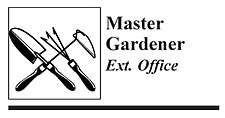March 18, 2010 at 8:45 a.m.
Blueberries are one of the most popular bare root plants we offer and each year we need to educate new gardeners on how to raise blueberries. Therefore, I am rewriting parts of an earlier article on blueberries.
Every spring gardeners contact us on how to grow various berries not knowing that the Chisago County Master Gardeners sell bare root plants. In fact, we sell; blueberries, raspberries, grapes and strawberry plants. We also sell bare root asparagus, and onion sets, and native plants, but this article is about blueberries.
Last spring I received a call from someone who wanted to plant blueberry plants he had just purchased. Since it was early April and the ground was still cold, I convinced him otherwise. I asked him the variety and he said he was going out to the garage to find out. I don't remember what variety they were, but they were not for our area. I asked if he had tested the soil because blueberries need an acid soil, he had not. He had spring fever and when he visited a new store at the grand opening, bought three blueberry plants probably because they were there.
I could tell many similar stories. In fact I have done it myself, bought plants because they were there, without knowing anything about them.
Last fall I wrote an article about having your garden soil tested if you were planning to raise berries, especially blueberries. This is because they need a soil that is acid with a pH of 4.0 to 5.0.
Blueberries are in the Heath family, which includes azaleas, rhododendrons and cranberries. They are tolerant of acid soil and have low fertility requirements. The planting directions may be different for you because your soil may be friendlier for raising blueberries. Sandy soils tend to have a lower pH than the heavy soil I have.
I had to dig holes about 18 inches deep and about six feet apart. This is because the plants will turn into bushes about three feet high. I mixed the soil with acid peat (moss) in about a 1 to 1 ratio. You can also mix about one-half cup elemental sulfur in the peat soil before planting. Using elemental sulfur helps lower the pH. Be sure not to use aluminum sulfur, as this compound can be toxic to the root and even kill the plant.
The sure thing in ordering from us is that all of our plants are for our area. The three varieties we sell are Chippewa, Northland, and Northblue.
Chippewa is a mid-season plant that is compact, upright, and grows about four feet high. The fruit is medium large, very light blue, firm and very sweet. Chippewa is recommended in all areas where a super cold hardy variety is desired.
Northblue is a mid-season variety. It's a semi-dwarf bush, growing to a height of three to four feet. The fruit is large, dark blue, with a wild blueberry flavor. Northblue is quite productive for its size, producing between three and seven pounds per bush.
Northland is an early variety that is vigorous, spreading, with medium blueberries, medium size and very sweet.
It is a good idea to plant more than one variety of blueberries and to alternate them in the same row. This is because some varieties will have better production if they are able to cross-pollinate.
If you need information on our bare root order form or our Spring Class Series, contact us at the Extension Office at 651-213-8901. Our first class will be on Tuesday, March 23, at the Senior Center in North Branch. Jim Birkholz will give a show-and-tell class on pruning fruit trees. The class starts at 6:30 p.m. and the cost is $5 per person.






Comments:
Commenting has been disabled for this item.